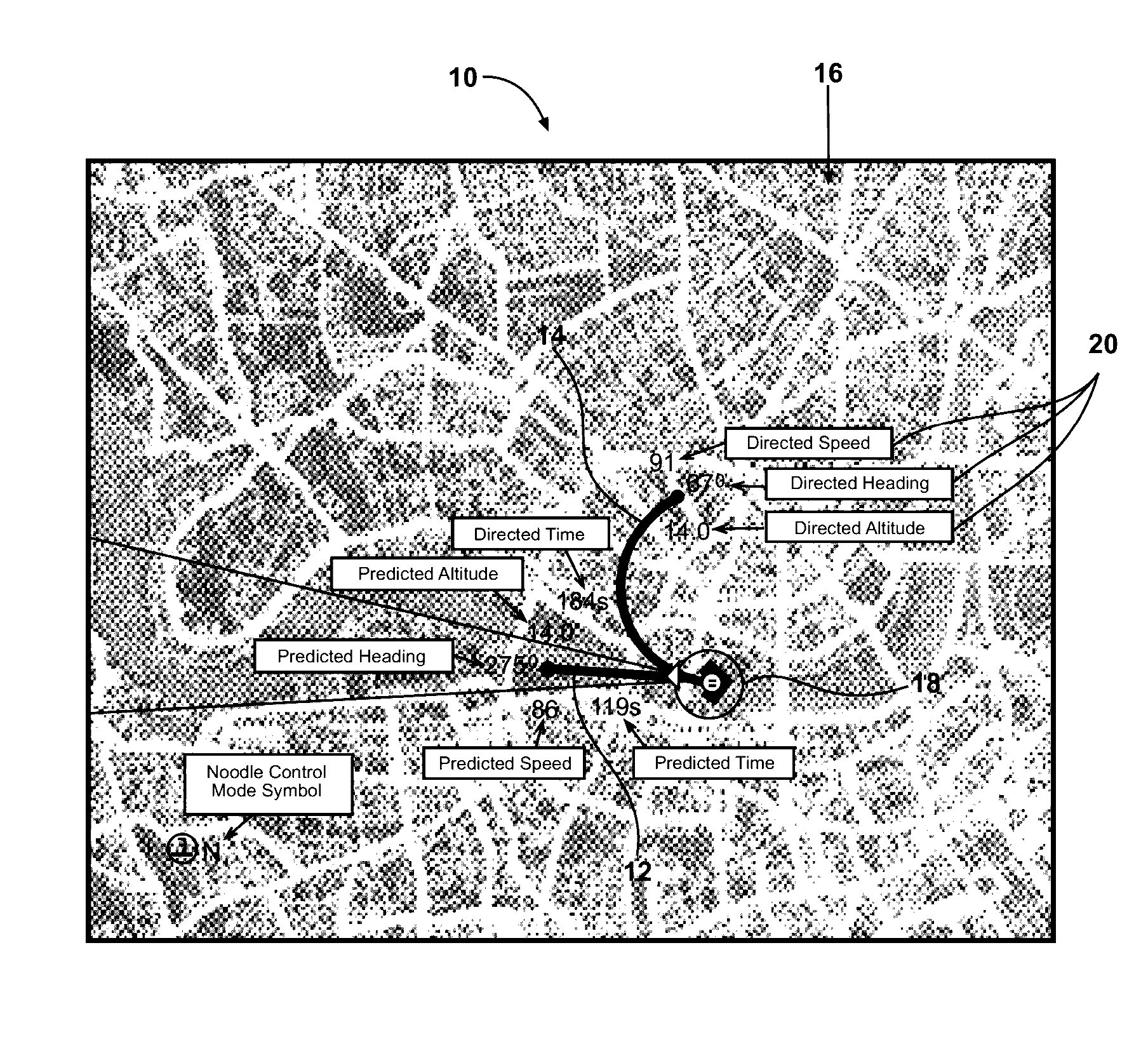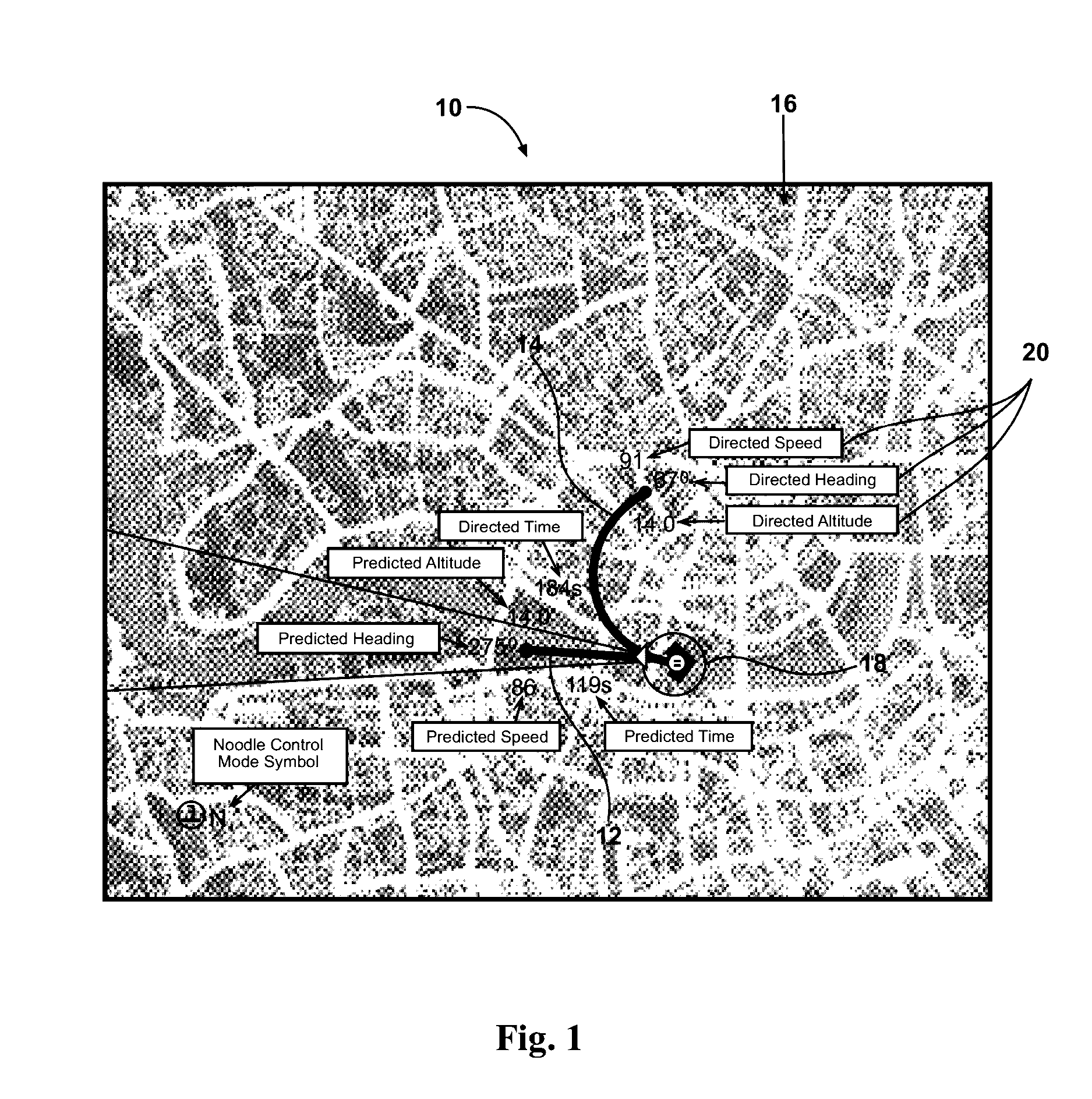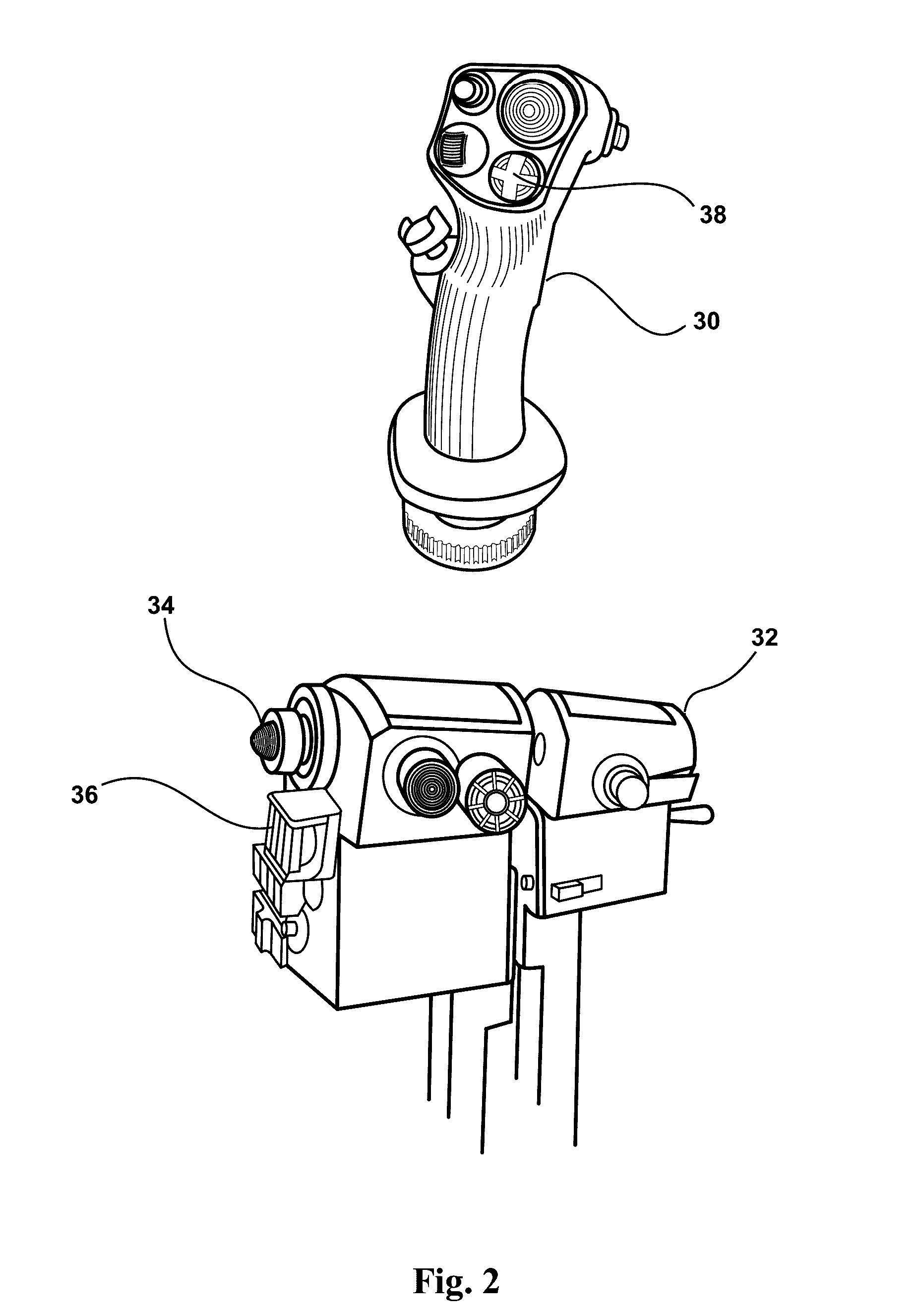Method and apparatus for operator supervision and direction of highly autonomous vehicles
a highly autonomous, operator-supervised technology, applied in the direction of vehicle position/course/altitude control, process and machine control, instruments, etc., can solve the problems of complex and variable identification, current methods for establishing the future path of vehicle movement are either too limited, too time-consuming,
- Summary
- Abstract
- Description
- Claims
- Application Information
AI Technical Summary
Benefits of technology
Problems solved by technology
Method used
Image
Examples
Embodiment Construction
[0025]The invention disclosed herein allows vehicle operators to selectively allocate input devices between either real-time control of the vehicle, or to a new modality that graphically specifies a desired future path of the vehicle. The future path specification is rapid and allows arbitrary radius curves (to include straight-line paths) to be joined end-to-end, resulting in a far more precise and flexible configuration and adjustment of a desired future vehicle path. Particularly in applications in which operators' attention is divided across multiple other tasks (such as in control of multiple highly autonomous vehicles), this method enables control of a vehicle's near future path in situations that were previously rendered infeasible by pilot task saturation. In the disclosed invention, the resultant commanded path is progressively displayed to the operator as it is built, allowing adjustment at any point. Once the symbology and geometric indicators define the desired future pa...
PUM
 Login to View More
Login to View More Abstract
Description
Claims
Application Information
 Login to View More
Login to View More - R&D
- Intellectual Property
- Life Sciences
- Materials
- Tech Scout
- Unparalleled Data Quality
- Higher Quality Content
- 60% Fewer Hallucinations
Browse by: Latest US Patents, China's latest patents, Technical Efficacy Thesaurus, Application Domain, Technology Topic, Popular Technical Reports.
© 2025 PatSnap. All rights reserved.Legal|Privacy policy|Modern Slavery Act Transparency Statement|Sitemap|About US| Contact US: help@patsnap.com



